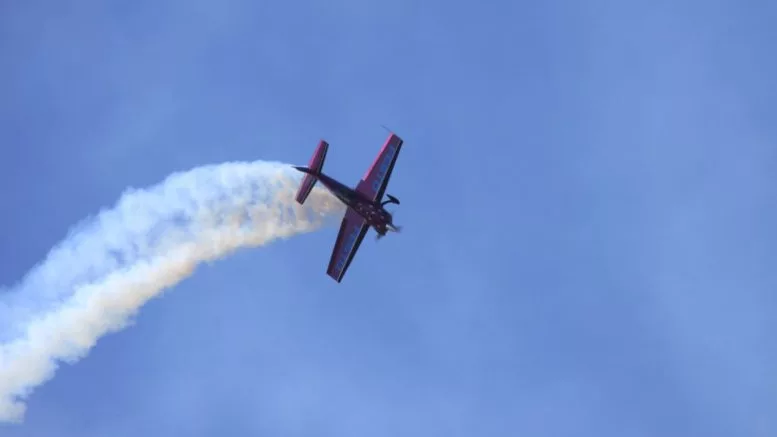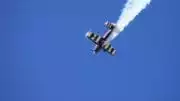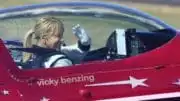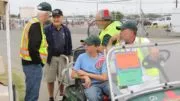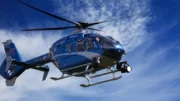Airshow Lingo and Terminology to Know
Airshows are incredibly exciting, but what do the airshow lingo and aviation terms mean?!
Have you ever watched a sport, and while the game is entertaining, you just wished you knew what was going on a little better? The same could be said of airshows.
Often, you’ll hear commentary or those in the know talking about ‘flying dirty’ or performing a ‘reverse Half Cuban’… But what does it all mean? Well, don’t worry, in this article, we are going to go through some common airshow lingo and aviation terms to know to better prepare for your next air show.
Airshow Lingo and Terminology Explained
Ok, before we get started, there are a few things you should know. Aviation is full of acronyms, technical terms, and jargon. This is true both in the air and on the ground. We’ve separated our air show terminology guide into two sections: Things that exist on the ground and things that happen in the air.
Aviation Terms: On the Ground
Watching an airshow from the ground is impressive. If there is commentary, you’ll often hear the following terms to describe where the airplanes will fly.
1. Crowd Line
Have you ever noticed rope barriers at airshows? These ropes typically determine the crowd line. This is the collective name given to an audience watching an airshow. The barrier is there for safety reasons and mustn’t be crossed.
2. The Display Line
The display line, although delineated on the ground, is actually a line for pilots. It provides an easy-to-see point reference. It is a limit as to how far an airplane may fly towards the crowd. The display line can be a wide painted line, a ground feature, or even a buoy row if you watch an airshow over the sea.
There are often several display lines—these change based on the aircraft size and speed.
3. Flightline
This generally runs parallel to the crowd line (but never closer than the display line) and is an imaginary line that pilots fly down to give everyone the best views of what they are doing! You can often book seats to get as close to the action as possible.
4. The Tower
In most airports, this is a traditional air traffic control tower. However, not all air show venues have these.
Interestingly, however, the overseer of the airshow will radio the airplanes and permit them to perform their maneuvers. You can hear examples of pilots speaking to ‘the tower’ at the Red Bull Air Race.
5. Crowd Center
If you want to catch the best view of the action, this is the place to be.
The crowd center is a point in the crowd that the pilots will perform the majority of their maneuvers toward.
Aviation Terms: In the Air
1. The Aerobatics Box
If you are watching a fast, high-energy air display, there is a 3D cube or ‘box’ of airspace marked for aerobatics.
There are lots of airplanes whizzing around at airshows, so only one airplane or a team of airplanes can be in the box at any one time. Otherwise, it might get a little too crowded!
2. Mirror Pass
Have you ever seen an airplane flying inverted while another passes underneath it? Aside from looking really cool, it makes them appear like a reflection. Now, when you are at an airshow, you’ll be able to explain exactly why it’s called a mirror pass!
3. Echelons
Airplanes don’t always fly wingtip to wingtip in formation. Sometimes one or another will be a little further back. This is an echelon. It is normally given a direction, too, either echelon right or echelon left. This means that the trailing aircraft will form up slightly behind the named side of the lead aircraft.
4. G’s
This is where it gets entertaining. G’s are a term used to describe the force of gravity exerted on an airplane as it performs a maneuver.
Let’s put it simply.
The more G’s, the harder the airplane is being pulled (or sometimes pushed) around in the sky. High G maneuvers are fast, fun, and really exciting.
Want to see some High ‘G’ action from the cockpit? This looks amazing!
5. Flat Break
A flat break is an excellent opportunity for photographs (and maybe a video if you are quick). This is where an airplane, or even perhaps a formation of aircraft, will fly directly toward the crowd and then ‘break’ off to the left or right to fly along the flight line.
6. Loop
A loop is what most people think of when talking about airplane aerobatics. The airplane starts canopy side up and wings level and then pulls up until it is going vertically. Then, it will continue to ‘pull’ until it is upside down. But the fun doesn’t stop there. Once inverted at the top of the loop, it will pull through, diving toward the ground before continuing until it is just about the same position it started in.
7. Half Cuban
A Half Cuban starts off as a loop, but once it is 2/3 of the way around the loop, it will roll wings level and fly the other way. Two of these half Cubans can be combined to form a Cuban 8. So-called, because if you drew the line the airplane made in the sky, it would look like the number ‘8’ on its side.
8. Wingover
This is when an airplane flies almost straight up. Obviously, this can’t carry on forever! Once the airplane runs out of speed, its wings almost stall, and it will turn in the air so that its nose points toward the ground.
9. Flying Dirty
It may sound a little vulgar, but flying dirty is something that all airplanes do! When an airplane is flying along, it is normally ‘clean.’ This means that its flaps and wheels are all stowed safely away. Conversely, when the wheels or the flaps are out (like when the airplane is landing), this is known as ‘flying dirty.’
Now that you know your lines from your loops and your flat breaks from flying dirty, you should have a great idea about what is going on. If you haven’t been to an airshow before, you are in for a real treat!
Ready to Soar with Us?

